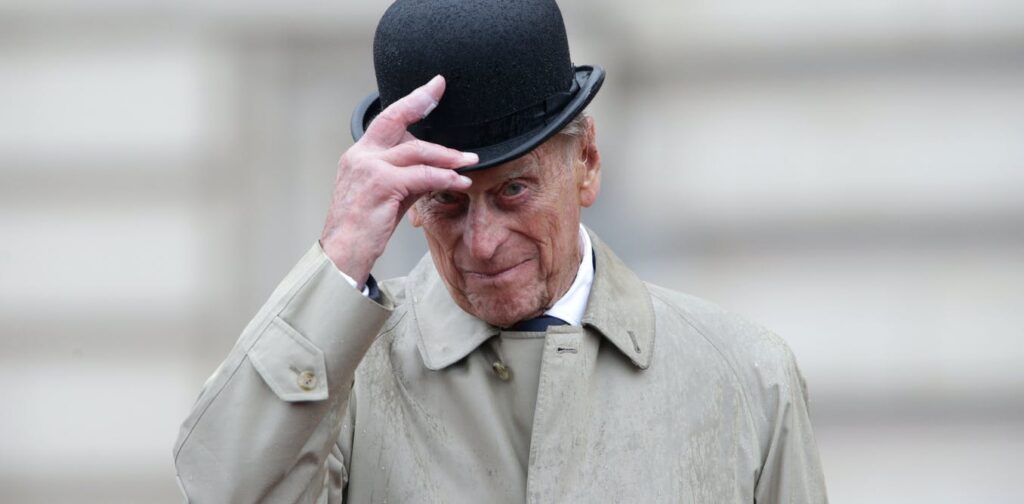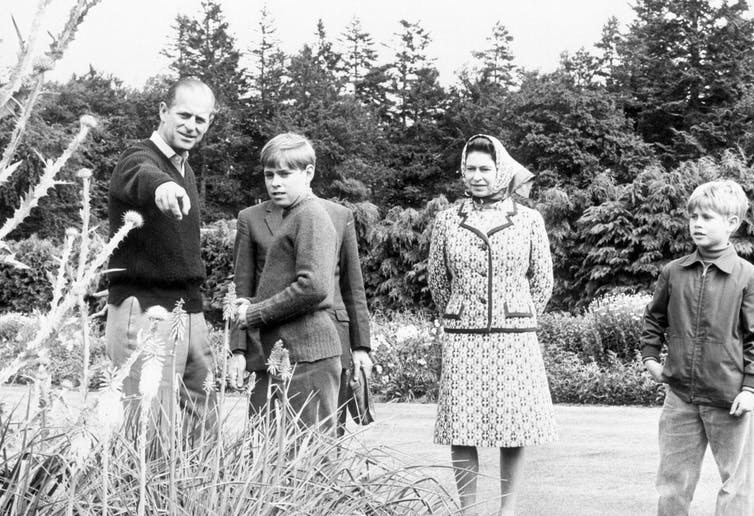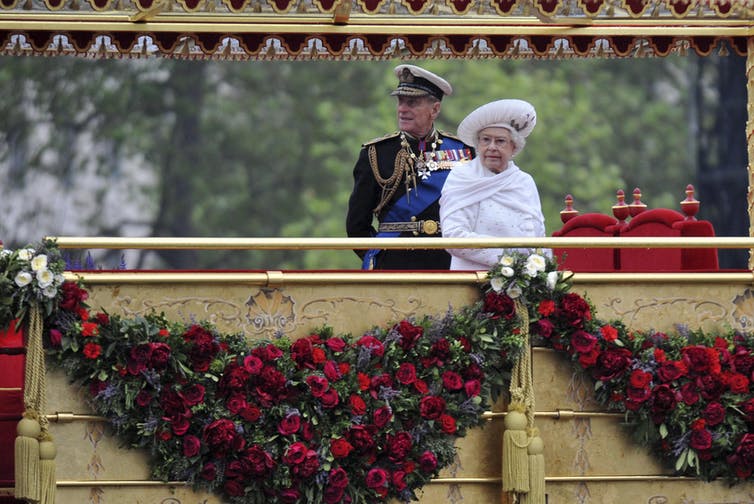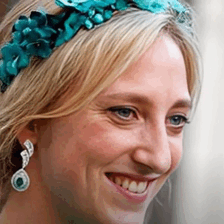Prince Philip dies: old-school European aristocrat and dedicated royal consort
The death of Prince Philip, the Duke of Edinburgh marks the end of a chapter not just for the British royal family – but for European monarchy itself. Philip belonged to that cosmopolitan world of interrelated royals that had ruled Europe before the first world war that has been largely swept away by time, war or revolution.

By Sean Lang
Senior lecturer in History at the Anglia Ruskin University
The death of Prince Philip, the Duke of Edinburgh marks the end of a chapter not just for the British royal family – but for European monarchy itself. Philip belonged to that cosmopolitan world of interrelated royals that had ruled Europe before the first world war that has been largely swept away by time, war or revolution.
Born on Corfu to the Greek-Danish Prince Andrew and the English-German Princess Alice of Battenberg, he might have lived as an obscure European prince had his family not been caught up in the revolutionary politics of the post-WWI era and banished from their homeland. Philip remained bitter throughout his life that his Romanov relatives had been murdered by the Bolsheviks: in 1993, his DNA was used to identify their bodies.
Moving first to Paris and then to London, Philip was educated in England, Germany and finally at Gordonstoun School, established by the German Jewish refugee Kurt Hahn. It was to the tough character-building regime at Gordonstoun that Philip always attributed his pragmatic, unsentimental approach to life, but which sometimes struck others as harsh or unfeeling.
In the second world war he served with distinction in the Royal Navy, but it was after the war that he was projected into the royal role that defined his life. Having fallen in love with his distant relative, Princess Elizabeth, he married her in 1947 in the first of a series of high-profile royal weddings that were to punctuate postwar British history.

To mark the wedding, Philip, who had given up his foreign titles when taking British nationality, was given the title Duke of Edinburgh. To his intense irritation, however, his wife retained her royal surname of Windsor for herself and their first two children rather than taking her husband’s name, Mountbatten. Eventually a constitutional compromise was reached whereby Prince Andrew and Prince Edward were given the surname Mountbatten-Windsor.
Fresh air
Philip seemed an invigorating breath of fresh air, striding into Buckingham Palace in slacks and open-necked shirt, in a monarchy that was in danger of appearing stuffy and out of touch. But when Princess Elizabeth succeeded to the throne in 1952, he discovered the ambiguities and frustrations of the role of consort to the British monarch. Unlike Prince Albert, he was not given the formal title of Prince Consort, though in 1957 he was given the courtesy title Prince Philip.

Like his Victorian forebear, he threw himself into charitable, scientific, sporting and educational schemes, most notably heading the National Playing Fields Association and the Worldwide Fund for Nature. Perhaps his most lasting legacy is the Duke of Edinburgh Award Scheme, a graded programme of outdoor adventure and endeavour for young people based on the same principles as Gordonstoun.
‘Dentopedology’ problem
Philip quickly developed a reputation for what he once defined, to the General Dental Council, as “dentopedology – the science of opening your mouth and putting your foot in it”. His “gaffes” were typical of the clubbish humour of the officer class – though less appreciated, sometimes even offensive, to other ears.
His remarking to the president of Nigeria, who was wearing national dress, “You look like you’re ready for bed”, or advising British students in China not to stay too long or they would end up with “slitty eyes”, is probably best written off as ill-judged humour. Telling a photographer to “just take the fucking picture” or declaring “this thing open, whatever it is”, were expressions of exasperation or weariness with which anyone might sympathise.

He was also capable of genuine if earthy wit, saying of his horse-loving daughter Princess Anne: “If it doesn’t fart or eat hay she isn’t interested.” Many people might have thought it but few dared say it. If Prince Philip’s famous gaffes provoked as much amusement as anger, it was precisely because they seem to give voice to the bewilderment and pent-up frustrations with which many people viewed the ever-changing modern world.
My husband and I
It was in his family role that Philip came in for most criticism. The Queen never failed to pay tribute to his support – for many years she would begin her public utterances with the words “My husband and I”. And their children appeared to outward appearances to be balanced and happy. Yet the string of scandals and divorces that engulfed the younger royals in the 1980s increasingly seemed to point to inadequate parenting.
In particular, Prince Charles, a more sensitive figure than his father but whom Philip had nevertheless put through the rigours of Gordonstoun and the Navy, suffered from his father’s no-nonsense approach. It was Philip who forced Charles to end public speculation and marry Lady Diana Spencer in 1981 and, when the marriage ended in divorce, much blame was attached to the exacting way in which the Duke had brought up his eldest son. The crisis provoked by Diana’s death in 1997 brought criticism of the monarchy out into the open, but the Duke played an important part in planning the funeral that went a long way towards rebuilding public trust.
Public servant
In his later years, the Duke of Edinburgh began to step down from his huge range of public roles – he held more than 800 presidencies and patronages – including the chancellorship of the universities of Cambridge, Salford, Wales and, fittingly, Edinburgh.

He received wide praise in 2012 when he stood for three hours in the rain beside the Queen at her Diamond Jubilee river pageant, and then suffered a bladder infection. However, his insistence on continuing to drive attracted criticism when, in 2019, he was in collision with another car near the Sandringham estate.
As his health deteriorated, he nevertheless kept up his schedule of public duties, only finally stepping down in 2017, at the age of 96.
Fittingly for a naval-military man, his last public duty was when he transferred his role as colonel-in-chief of The Rifles to his daughter-in-law Camilla, Duchess of Cornwall in July 2020.
Republished with permission from The Conversation under Creative Commons License.






 Afrikaans
Afrikaans Albanian
Albanian Amharic
Amharic Arabic
Arabic Armenian
Armenian Azerbaijani
Azerbaijani Basque
Basque Belarusian
Belarusian Bengali
Bengali Bosnian
Bosnian Bulgarian
Bulgarian Catalan
Catalan Cebuano
Cebuano Chinese (Simplified)
Chinese (Simplified) Chinese (Traditional)
Chinese (Traditional) Corsican
Corsican Croatian
Croatian Czech
Czech Danish
Danish Dutch
Dutch Esperanto
Esperanto Estonian
Estonian Filipino
Filipino Finnish
Finnish French
French Frisian
Frisian Galician
Galician Georgian
Georgian German
German Greek
Greek Gujarati
Gujarati Haitian Creole
Haitian Creole Hausa
Hausa Hawaiian
Hawaiian Hebrew
Hebrew Hindi
Hindi Hmong
Hmong Hungarian
Hungarian Icelandic
Icelandic Indonesian
Indonesian Irish
Irish Italian
Italian Japanese
Japanese Javanese
Javanese Kannada
Kannada Kazakh
Kazakh Khmer
Khmer Korean
Korean Kyrgyz
Kyrgyz Lao
Lao Latin
Latin Latvian
Latvian Lithuanian
Lithuanian Luxembourgish
Luxembourgish Macedonian
Macedonian Malagasy
Malagasy Malay
Malay Malayalam
Malayalam Maltese
Maltese Maori
Maori Marathi
Marathi Mongolian
Mongolian Myanmar (Burmese)
Myanmar (Burmese) Nepali
Nepali Norwegian
Norwegian Pashto
Pashto Persian
Persian Polish
Polish Portuguese
Portuguese Punjabi
Punjabi Romanian
Romanian Russian
Russian Samoan
Samoan Scottish Gaelic
Scottish Gaelic Serbian
Serbian Sesotho
Sesotho Shona
Shona Sindhi
Sindhi Sinhala
Sinhala Slovak
Slovak Slovenian
Slovenian Somali
Somali Spanish
Spanish Sundanese
Sundanese Swahili
Swahili Swedish
Swedish Tajik
Tajik Tamil
Tamil Telugu
Telugu Thai
Thai Turkish
Turkish Ukrainian
Ukrainian Urdu
Urdu Uzbek
Uzbek Vietnamese
Vietnamese Welsh
Welsh Yiddish
Yiddish Yoruba
Yoruba Zulu
Zulu